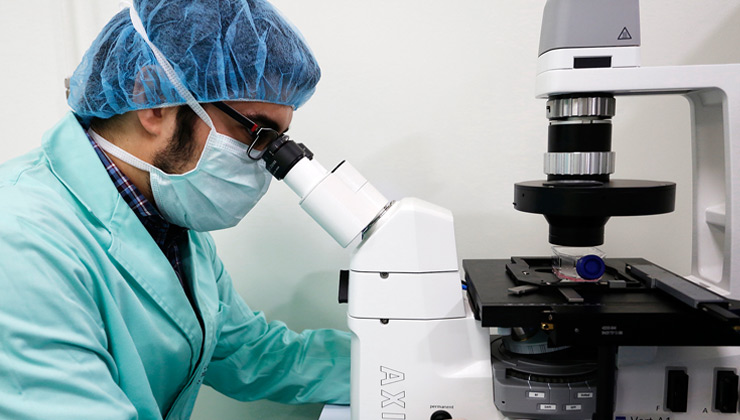The IMO Foundation researchers have gone one step further in the retinal dytrophies research project by registering three new cell lines. In concrete, the investigator team, led by Dr. Esther Pomares and located at the IMO Molecular Biology Laboratory, has reached the development of 3 novel stem cells models obtained from patients with the following three diseases: achromatopsia, Best disease and retinitis pigmentosa.
Altogether, the 7 cell lines generated by the Fundación IMO team are unique models in the world as they present particular mutations in 6 genes involved in retinal dystrophies: 1 related to Stargardt disease, 3 to retinitis pigmentosa, 1 to Best disease and 1 to achromatopsia.
Commitment to gene and cell therapies
Within the framework of the Fundación IMO project, together with the Fundació Bancària “La Caixa” support, it was possible to obtain induced pluripotent stem cells from fibroblasts (skin cells) of patients with retinal dystrophies. From these results, researchers have further generated retinal pigmented epithelium cells, which can be analyzed in vitro, approaching the final objective of this study: the development of personalized cell therapies for the treatment of retinal diseases.
The 7 unique cell models have been published on the prestigious scientific journal Stem Cell Research, and registered in the Banco Nacional de Líneas Celulares and The Human Pluripotent Stem Cell Registry, thus providing these findings as a benefit for all the scientific community.
The final objective of the Fundación IMO study is the development of personalized cell therapies for the treatment of retinal diseases
About inherited retinal dystrophies
Inherited retinal dystrophies affect 1 out of 3.000 people worldwide. At present, more than 300 genes have been related to these pathologies, which usually cause a progressive and sever visual loss. Despite the absence of a treatment, the identification of the genetic mutation causing the disease is essential to establish the basis for the future novel gene and cell therapies, which may bring a solution to these pathologies. Hence the importance of advances such the ones achieved by Fundación IMO, an institution that, since 2017, counts with an specific area for cell culture and new therapies experimentation, located at the IMO Molecular Biology Laboratory.
Indeed, one the main objectives of the entity and its research team is finding gene and cell therapies, which will allow the recovery of vision in patients with inherited ocular diseases.
